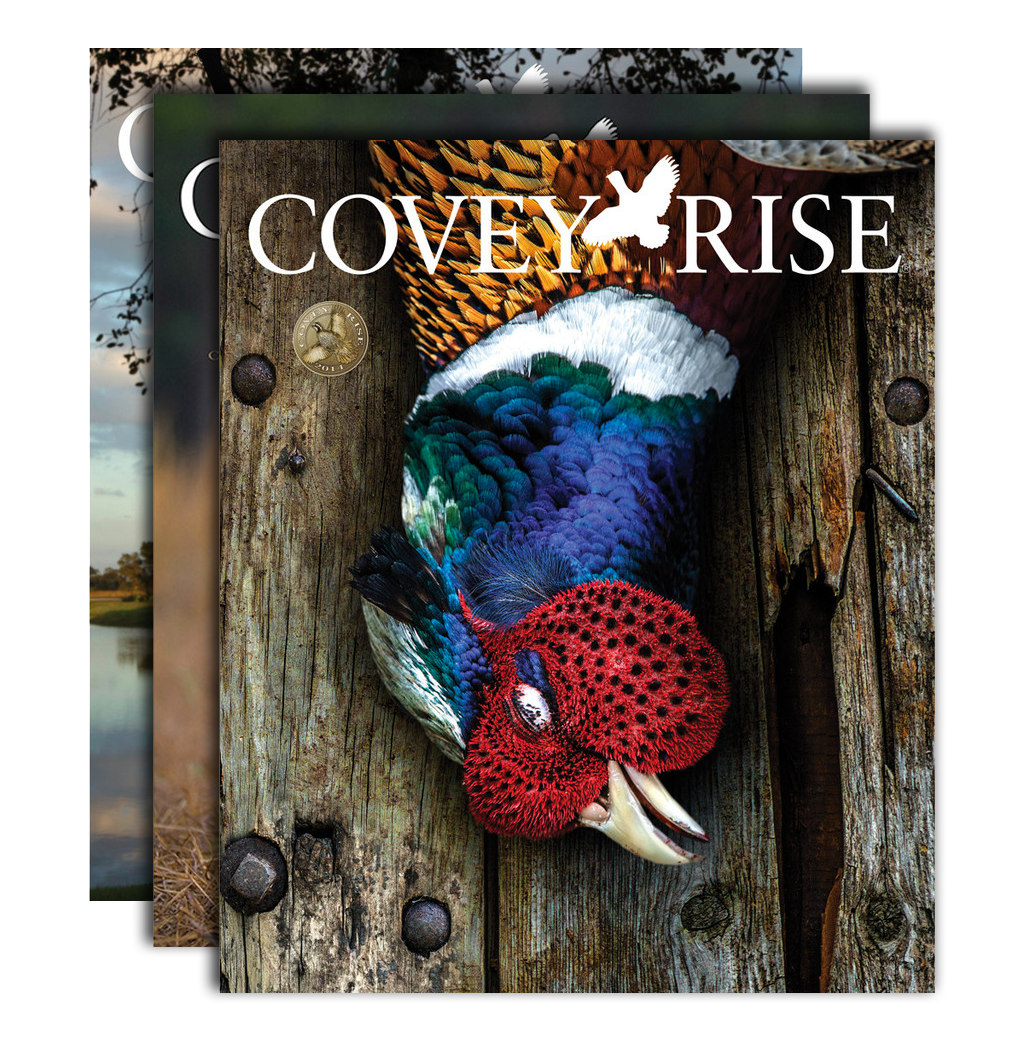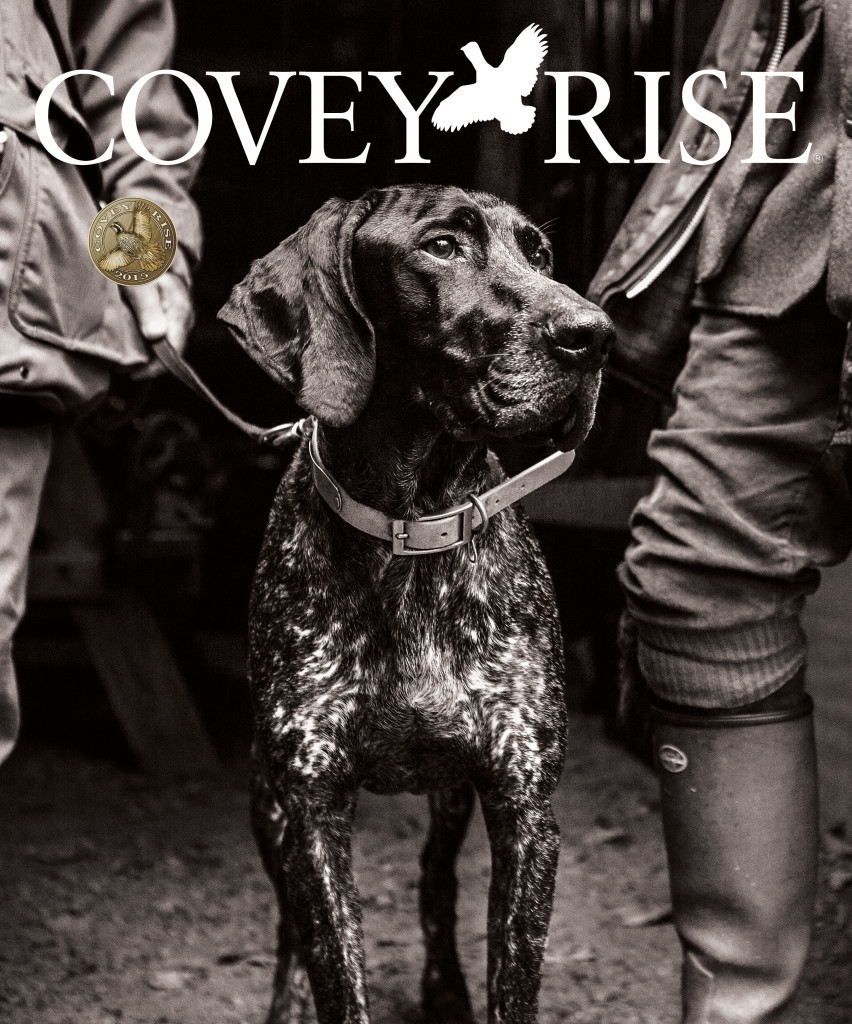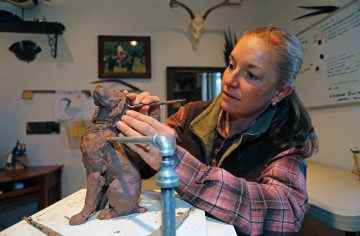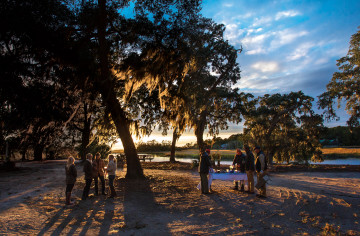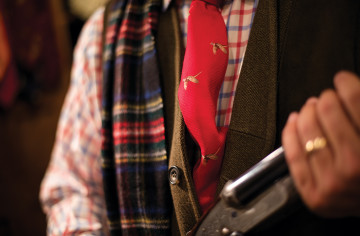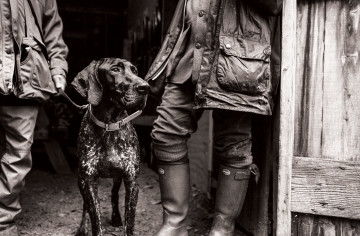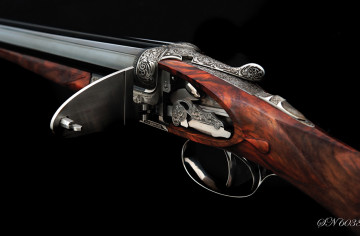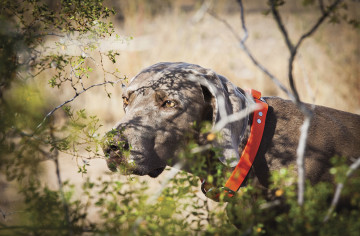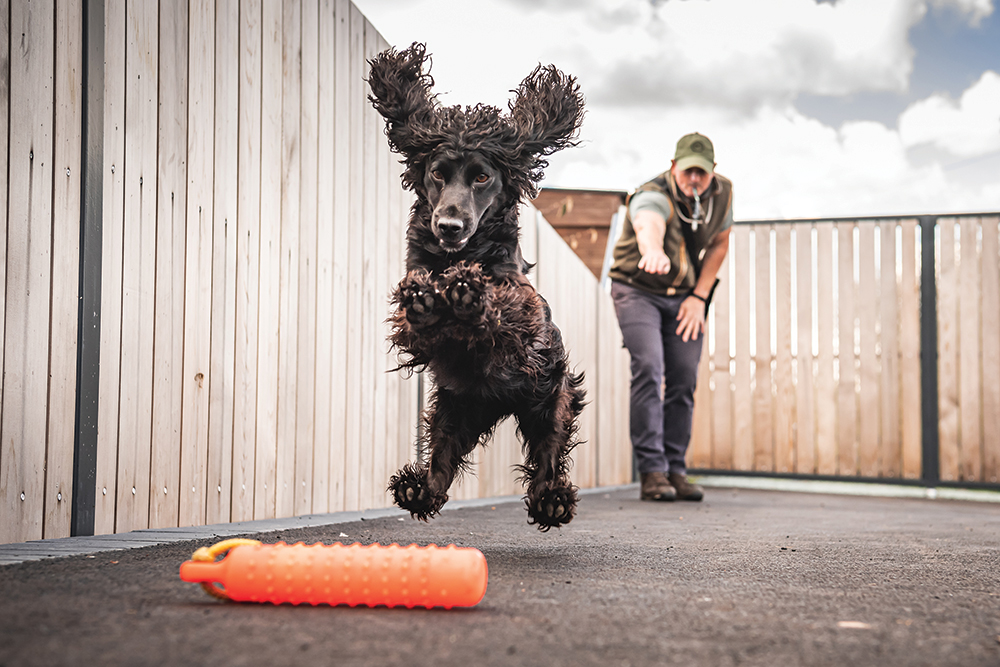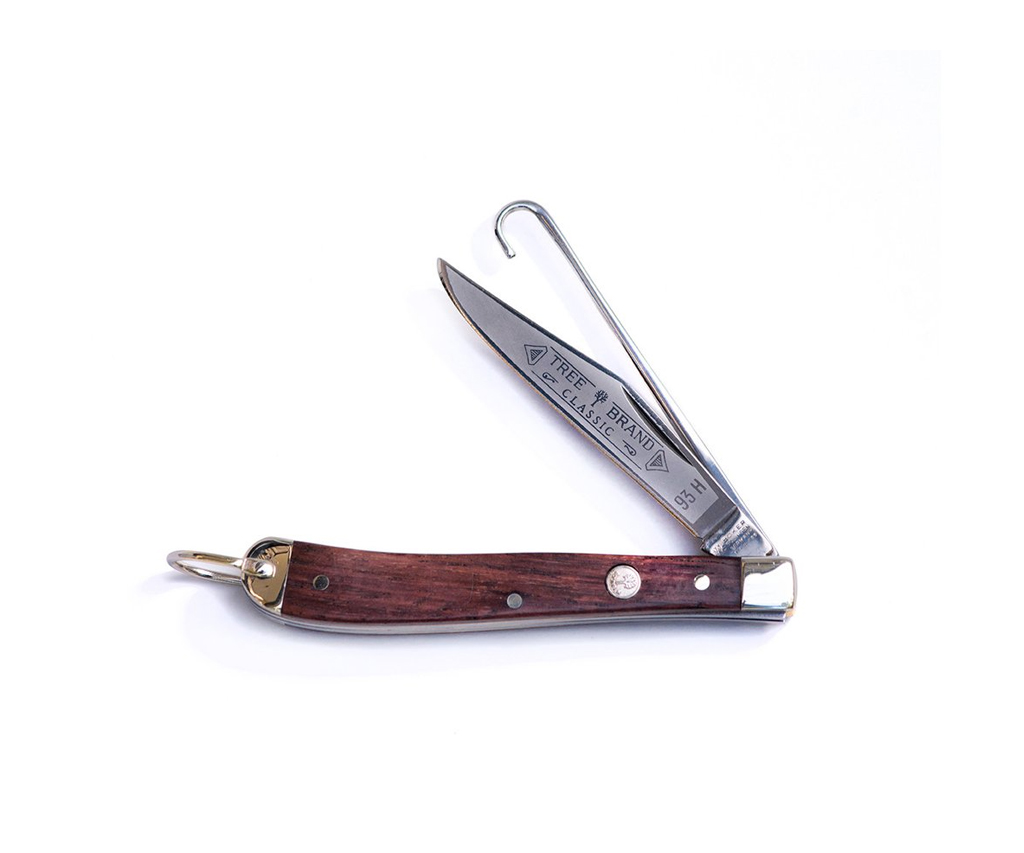Spectacle Of Nature
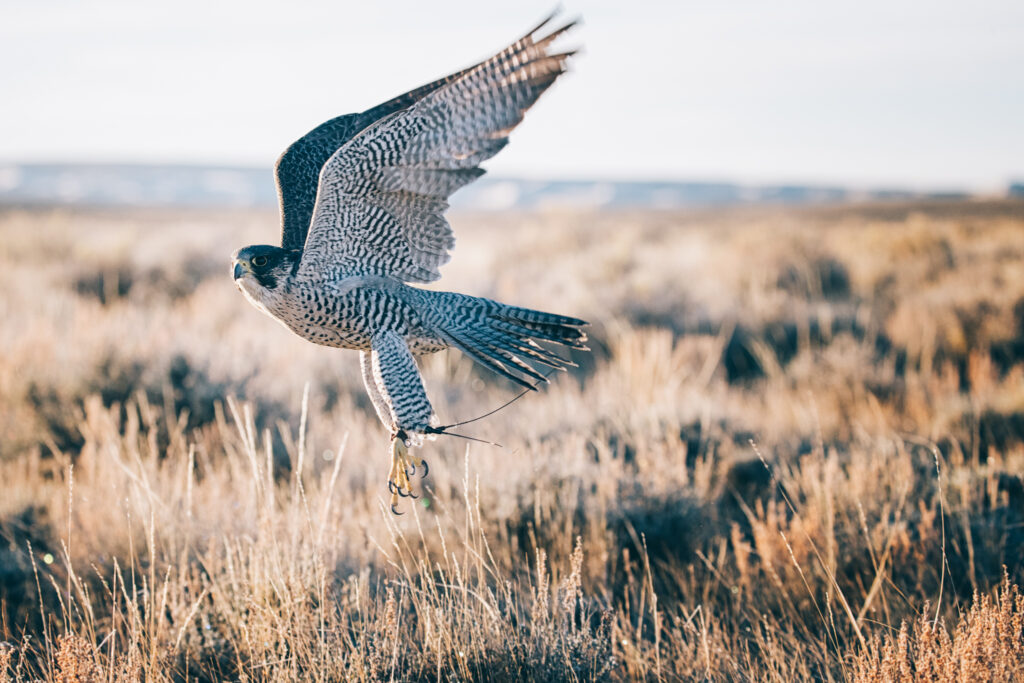
Since the advent of agriculture, few humans now hunt for survival. We bind ourselves, by and large, to parcels of property in lieu of roaming the earth searching for sustenance. Nevertheless, the heart of a hunter requires the pursuit, and the methods and tools we choose challenge our abilities and stimulate our passion for the sport. Some carry a coveted heirloom double gun that inspires them. Others pick a pup and train it themselves or with a professional. But an elite few convince a natural predator to share its hunt with humanity, tethering both parties to a form of hunting that predates civilization. These people practice falconry.
Historians cannot identify an accurate time or place of origin for falconry, but they believe humans have pursued game in this manner since before the written word. Experts citing the earliest records of civilization—some going back to 6,000 BC—describe a sophisticated method of falconry that likely evolved over hundreds or thousands of years before the ancient texts. Falconry achieved renown among European nobility around 500 AD, and during subsequent centuries, birds of prey became a status symbol and method of assigning social rank. Generations of medieval nobles flew gyrfalcons and peregrines while yeomen and servants flew hawks and kestrels.
Some countries, such as England, codified the assignment of raptors in accordance with the social strata through “Laws of Ownership,” but by the 18th Century, the practice of falconry fell from favor as the nobility declined in power and the use of firearms became prolific. Falconry experienced a renaissance in Europe and North America during the early 20th Century, and through the discipline and devotion of present-day practitioners, along with organizations such as the North American Falconer’s Association (NAFA), the International Association for Falconry and Birds of Prey (IAF), and the United Nations Education, Science, and Cultural Organization (UNESCO), it persists as a living art.
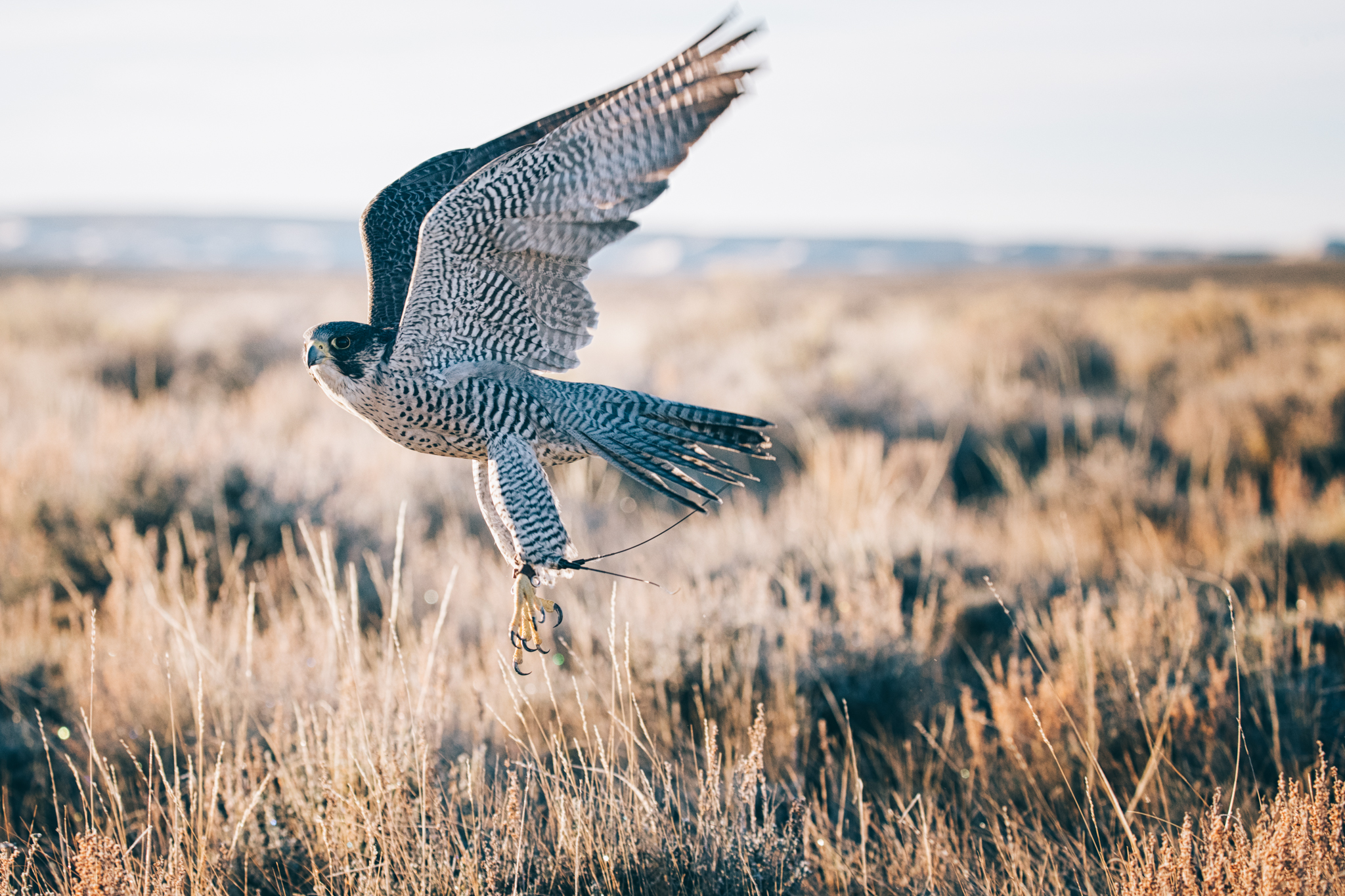
Steve Chindgren, one of the foremost falconers in North America, glasses the Wyoming steppe searching for his English pointer. He spots him in the vast sea of sagebrush and jumps behind the wheel of his camper-covered truck to motor closer. Steve knows the dog will hold point long enough to close the distance, and though he moves with urgency, his pace isn’t frantic. He parks the truck and opens the camper hatch to reveal two falcons perched in its bed on long wooden boards. Steve fits his hand into a leather gauntlet before choosing one of the raptors. Its eyes remain hidden beneath a leather hood, and as it loosens its grip on the perch, it grasps Steve’s hand in a bond of trust. They approach the pointed dog hand-in-hand until Steve stops and slips the hood. With its sight restored, the falcon gathers wind beneath its wings and defies the pull of gravity by the strength of its body and the power of its will, gaining altitude until it circles several hundred feet above the plain. Its prey—a bevy of sage grouse—flushes from the cover, and the falcon dives for its quarry, sizzling down swept-winged from the stratosphere.
Steve watches as his raptor intercepts its chosen target, and at the point of impact, the mid-air collision produces an audible blow like a fighter’s fist upon a heavy bag. The falcon follows its disoriented target through a cloud of feathers as it tumbles to the dirt. Before the sage grouse reorients itself, the falcon sets upon it and dispatches the wounded bird with its beak by severing the backbone. Steve allows the falcon time to feast on its favorite parts before producing a sparrow from his game bag and exchanging it with the raptor for what remains of the sage grouse. The pointer patiently waits as Steve draws the grouse and feeds him some of its organs as a reward, then as the falcon finishes and the pointer rubs its face in the site of the kill, Steve asks them both, “How happy are you right now?” Their actions indicate there’s nothing they’d rather do, and the same can be said for their human handler.
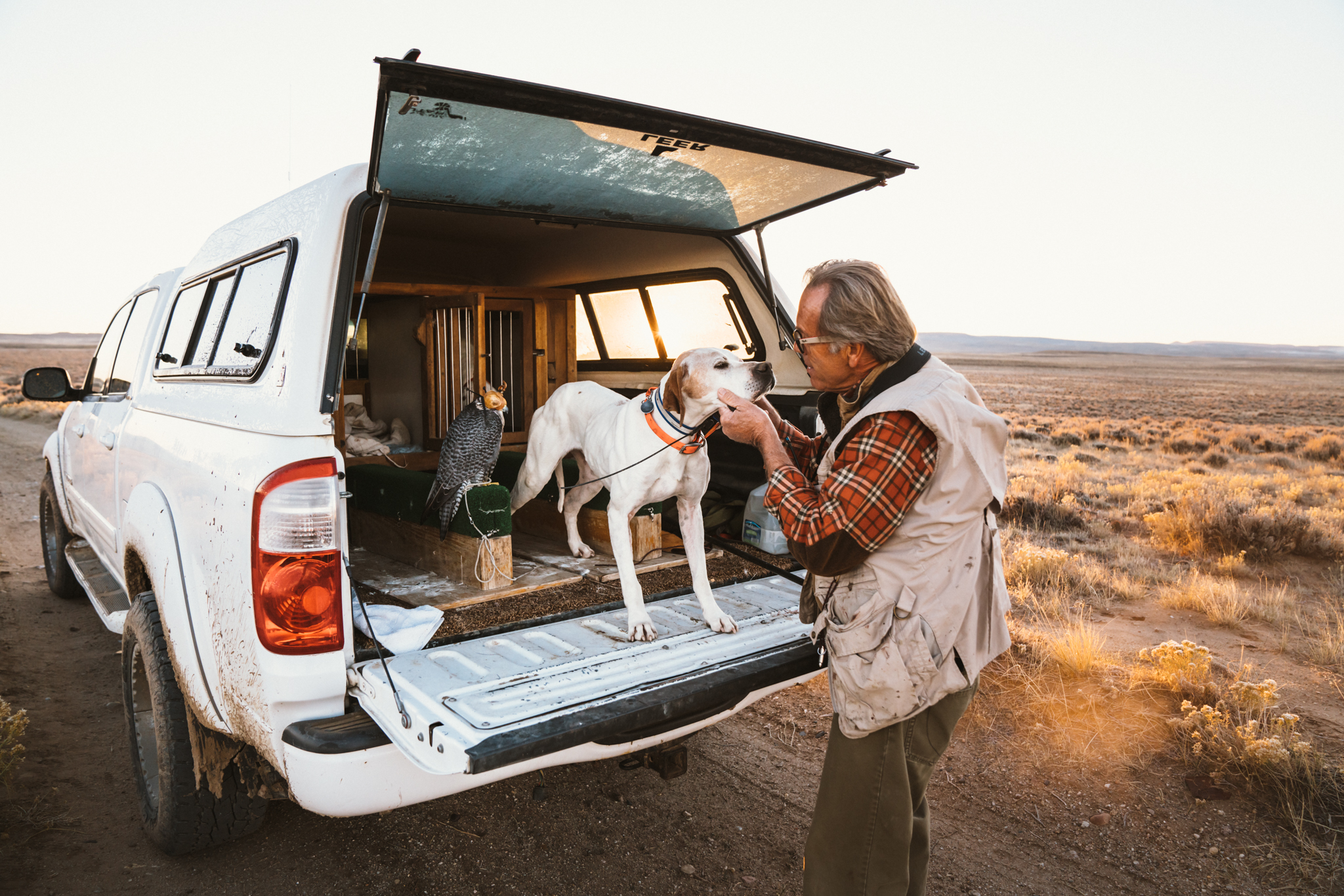
The rural mountains east of Salt Lake City, Utah, kept Steve occupied as a boy and offered him ample opportunities for exploring the natural world. He buried himself in books when he wasn’t outdoors, and after seeing a hawk snatch a songbird from the sky, he searched the encyclopedia and found a footnote on falconry. “After learning about the hawk, I got out the ‘F’ volume of the encyclopedia to find ‘falconry’ and saw a guy with a bird on his hand. I was about 7 years old when I decided, ‘I’m gonna do that,’ and I never looked back,” Steve said. One of the many skills learned in falconry requires luring a bird by feeding it without overfeeding—too much hand-feeding domesticates the animal to the point it no longer wishes to hunt. “It’s like giving a kid too much allowance,” said Steve. “They won’t learn the value of work if you give them something for nothing.”
Steve tamed hawks by trial and error, admitting that most of his earliest attempts resulted in failure to keep the birds near home. He eventually convinced a hawk to stay close, but it came and went as it pleased for the next five years. “During those early years, I was just watching the hawk hunt near my house and learning its behavior. Though I wasn’t hunting with the bird, I became attuned to nature while watching it in action, and that’s mostly what falconry is about.” Without the luxury of the Internet, Steve read every book available to him on the subject of falconry, exhausting the resources of his school and local libraries. He discovered the 11th Century writings of Holy Roman Emperor Frederick II titled De Arte Venandi cum Avibus (On the Art of Hunting with Birds) and purchased a translation for himself with money he earned from picking and selling apricots door-to-door. The same translation of this ancient work now graces the bookshelf of his “House of Grouse” in Wyoming. “When I first read the books as a kid, I didn’t understand everything described in them. But the volumes made more sense over the years, and I cherish them to this day.”
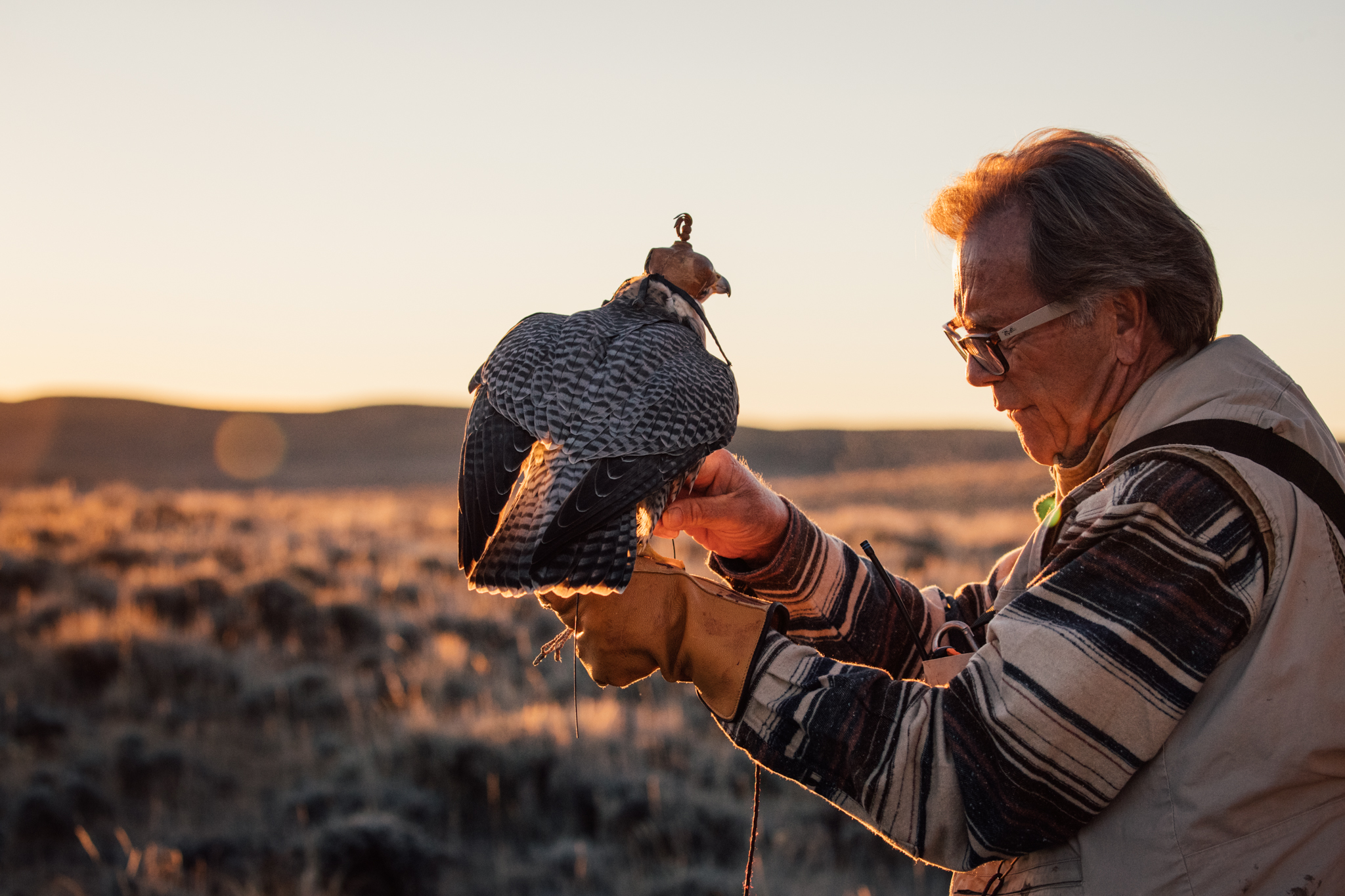
Armed with confidence and knowledge, Steve trained and flew a prairie falcon from the time he entered high school, hunting pheasants and ducks wherever he found them. During those early years, he located and flushed the birds himself. But habitat dwindled and locating birds became difficult, forcing Steve to find other game species and incorporate dog work into his hunt. He used German shorthaired pointers and Deutsch Drahthaars for their versatility before settling on English pointers for covering the hunting grounds he now prefers. “I was challenged by trying to find other quarry besides ducks and pheasants. And the thing I didn’t like about hunting pheasants and ducks was having to get permission from the landowners. Then, once you got permission, there were powerlines and barbed wire fences that presented a hazard to the falcon and the dogs,” said Steve. “Wyoming sage grouse hunting provides a pristine environment that’s mostly free of fences and power poles, and there’s navigable roads running all through this desert.”
Making a meal of sage grouse garners varied levels of enthusiasm, but Steve insists they serve up as fine table fare, saying, “Sage grouse has a bad reputation from shotgun hunters because they’re often perforating the crop and intestine with shot, and then they’re stuffing it into a game bag for hours. If they would draw the bird immediately and remove the crop, they’d be surprised at how delicious they are.
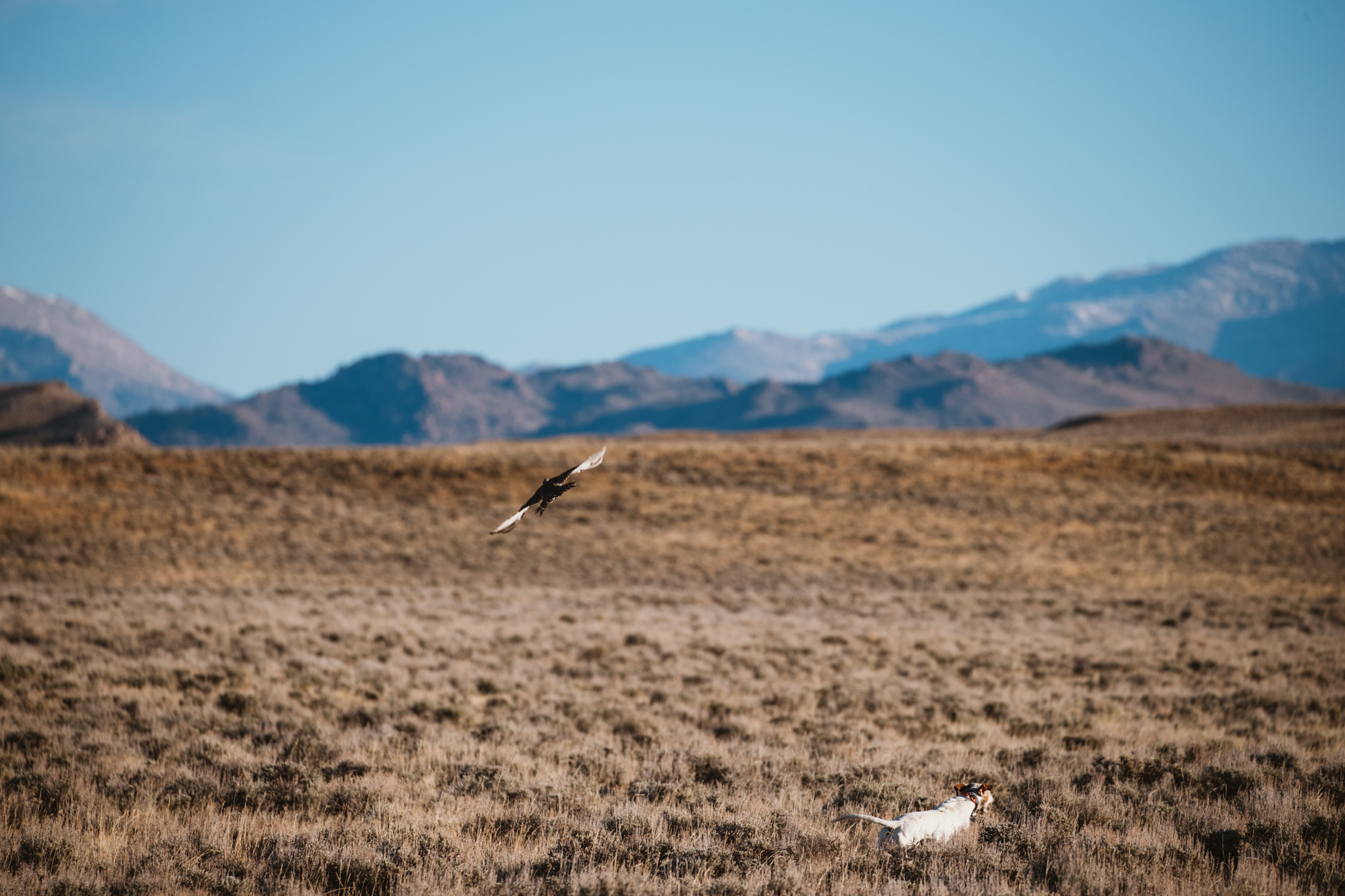
Falconers catch their birds from the wild or breed their own, and since 1979, Steve has flown his own variety of captive bred birds for hunting grouse. He crosses a gyrfalcon with a peregrine and flies the male of this match, which is one-third smaller than a female and called a tiercel. “I like the challenge of flying a smaller falcon against bigger game such as ducks and grouse, but the male peregrine is too small, and neither the female peregrine nor a pure gyrfalcon offers the performance I want. Crossing the gyrfalcon with a peregrine gives me a tiercel that’s the size of a female peregrine with the flying style I’m seeking.” Steve trains strength and endurance into his birds and dogs for long duration hunts over vast sweeps of open ground. His dogs range ahead at distances of a mile or more, and they must hold point long enough for his arrival—sometimes up to half an hour—without bumping the grouse. Once Steve slips the falcon, it gains and sustains altitude several hundred feet above the earth, burning an incredible amount of energy in the process. “I see myself as a coach, and I practice my team hard. With the dogs, you’re running them on the verge of out of control and hunting with them like this requires an incredible amount of trust in their ability to hold point.”
“Though others may disagree, I get much better performance from my captive bred falcons than from wild birds. Wild birds tend to conserve energy and don’t hunt as aggressively as I like. I condition the minds and bodies of my birds to make them confident and physical hunters.” Steve trains all members of his hunting party in unison, and he insists that training dogs and birds to hunt as a team requires less effort than many might think. “For training my dogs and birds to hunt together, I rely on an expert called ‘Gene Pool.’ Many of the sporting breeds we use today, or their early ancestors, hunted alongside birds of prey for hundreds of years before the use of firearms. Start with good genetics and these animals will learn what you want and will perform with ease.”
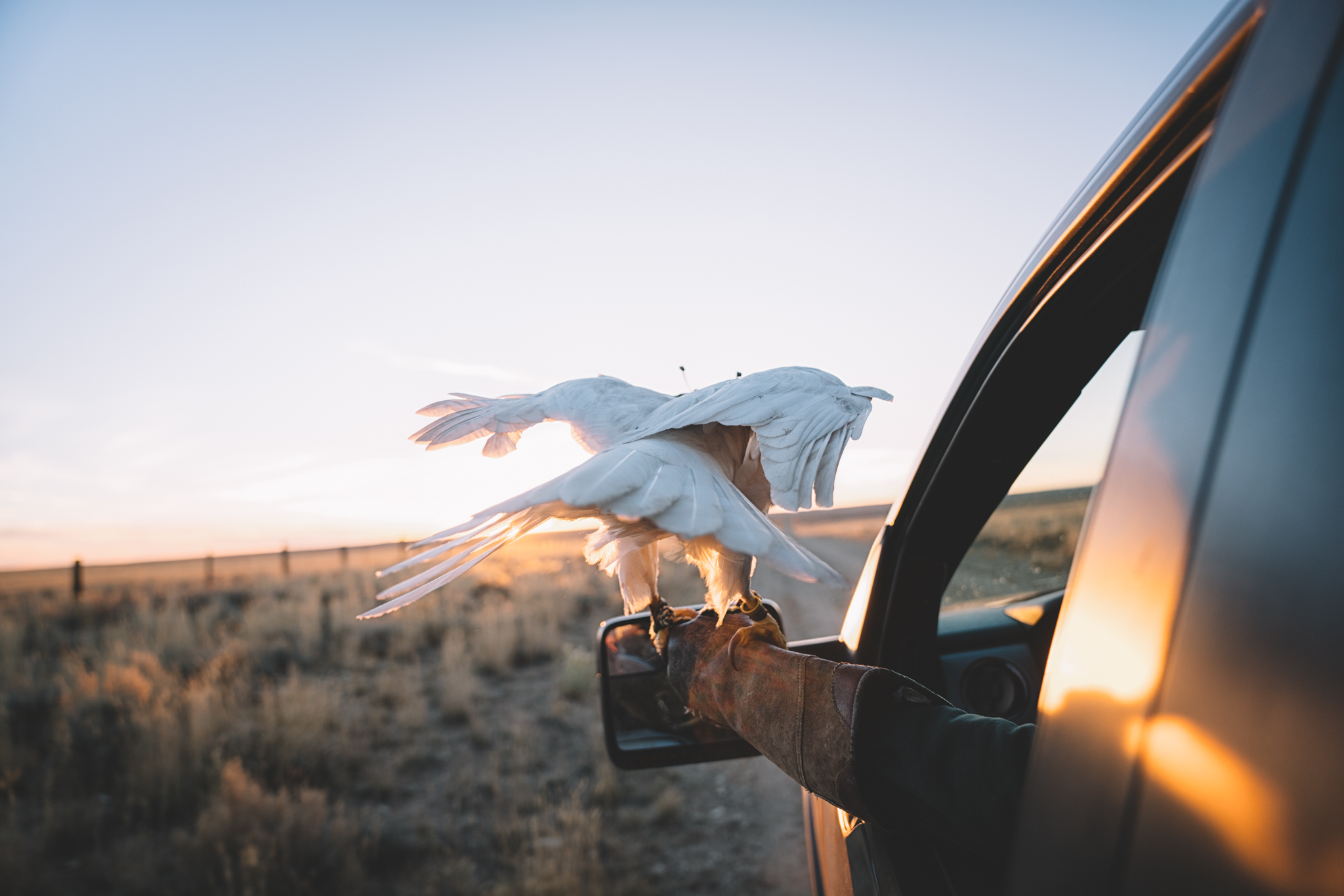
In his book, The Art of Hawking Sage Grouse, Steve writes, “It’s through the noble character of falconry that one can learn more about the secrets of nature.”
While it is true that falconry offers an intimate connectedness with creation, the art demands intense devotion from its disciples. The addition of a bird dog pledges further fidelity to the craft, expanding the alliance between man and beast into a triumvirate. All three hunters entering this pact—the falcon, the dog, and the falconer—pledge themselves to this purist path. For the falcon and the dog, their contribution often equals the sum of their lives. For the falconer, this Tao requires extraordinary levels of dedication to the care of these creatures and the mastery of this art. Few people focus their effort in such a way, but upon observing those who do, the majesty of their work often stirs the soul.
Originally published in Volume 10, Number 4 (June-July 2022) of Covey Rise.






